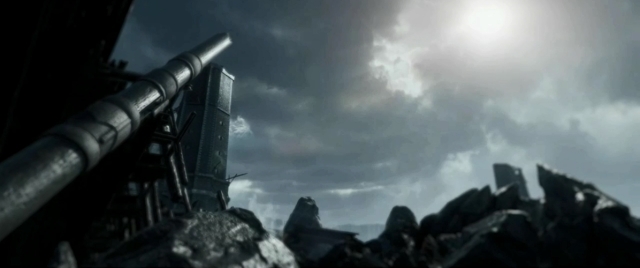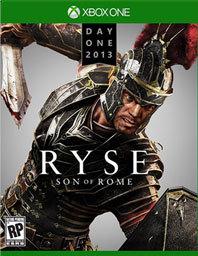Ryse: Son of Rome
Overview -
Crytek leaves behind the shooting of 'Crysis' for its historic entry in the Xbox One launch lineup, opting for spears, shields, swords and Marius Titus, a Roman soldier hell-bent on revenge. This extremely violent brawler, which takes much inspiration from the 'Batman: Arkham Asylum' combat system, attempts to make the case for the Xbox One's technical prowess by bringing ancient Rome to the screen in all its war-torn beauty, which, when considering the game's Xbox 360/Kinect roots is no mean task.
Video Review
'Ryse' is its beauty. For every sword swipe or shield bash, there's a resulting, impactful and gruesome visual reaction, a reward more satisfying than any experience bar or floating damage number could ever offer. Again, Crytek delivers on the promise of industry-pushing technical achievement. Ancient Rome and its surroundings are placed directly into your living room, blood spewing with liquidity, bones snapping with crunch, ships crashing in a riot of enormity, fireballs flung and tearing apart the very floor at your feet with destructive force. Not a detail goes unchecked.
 |
The fluidity of the combat is supported almost flawlessly with some extremely impressive animation work, mostly tying together each of your attacks with realistic weight and inertia. There is the awkward moment when Marius slides an extra foot to land an execution, and the transfer from light to heavy attack as you hold the button instead of tapping it is jarring at first, but it's all in the name of constant momentum. As long as you keep your combo up, the game will reward you with an unfaltering smoothness. It turns what might have been dull gameplay into a truly exciting experience, which isn't so easy to do.
Few games accomplish what 'Ryse' does in the cohesion of visuals and design. The only time the visuals take too much precedence is during boss fights, when instead of allowing the player to finish somebody off with an execution, the game cuts away to a scene depicting what you could be doing yourself.
Audio Review
The score in 'Ryse' feels more traditional than anything else, accompanying the action with predictable swells and dips, drum rolls for the barbarians and trumpeting for the royals. It's not so drab as to be considered placeholder, but along with the typically serious tone of the campaign's narrative, the music isn't trying to make the game anything more than its clichéd name. Unfortunately, though Marius is well-acted as he transitions from green rookie to battle-hardened leader, the writing dulls all other performances.
The various chants and warcries of your surrounding enemies do little to enhance the combat, reminding us in their repetition that this is, in fact, a video game and not the interactive movie the visuals hope to achieve.
Replay Factor 4/5
As the first Xbox One game worthy of its 1000 gamerscore, 'Ryse' enhances its moderately-sized campaign with difficulty increases that require further refinement of your abilities, not just a hunkering down for unfair deaths. Playing it through again becomes a new experience as a result and is well worth it.
There's also a fair bit of customization for your online avatar. Upgrading your gear, in addition to turning a tunic into something a bit more manly, will net you better statistics in regard to health, focus attacks, experience gain, etc. Leveling up, which opens up new tiers of equipment, is a bit slow, no doubt to keep players interested long enough for future DLC, and microtransactions, the Xbox One's most prolific "feature," are very present. There might have been far more compelling ways to earn new gear than randomized "Booster Packs," but then Microsoft and Crytek might not have been able to monetize it so easily. Fortunately that's the only downside to microtransactions here, as with a bit of grinding you can afford those booster packs without real-world money. It would have been nice, however, if we could have earned themed costumes through achievements or campaign progress, instead of their being offered solely as DLC.
For every dollar that goes into technical and visual design, that's one that doesn't go towards amplifying a combat system, and I'm okay with that tradeoff so long as the gameplay is fun, if not incredibly deep. In a world of limited budgets constraining unlimited potential, Crytek's priorities were not misplaced. 'Ryse: Son of Rome' is an absolutely gorgeous game with a combat system designed to look flawless. For the most part it absolutely does. I'd never make the argument that Crytek is going for something too far away from shallow thrills, but if the potential of the new generation is in the execution of progressive, game-enhancing visuals, then that potential has been fulfilled.
Click here to view comments on this review












